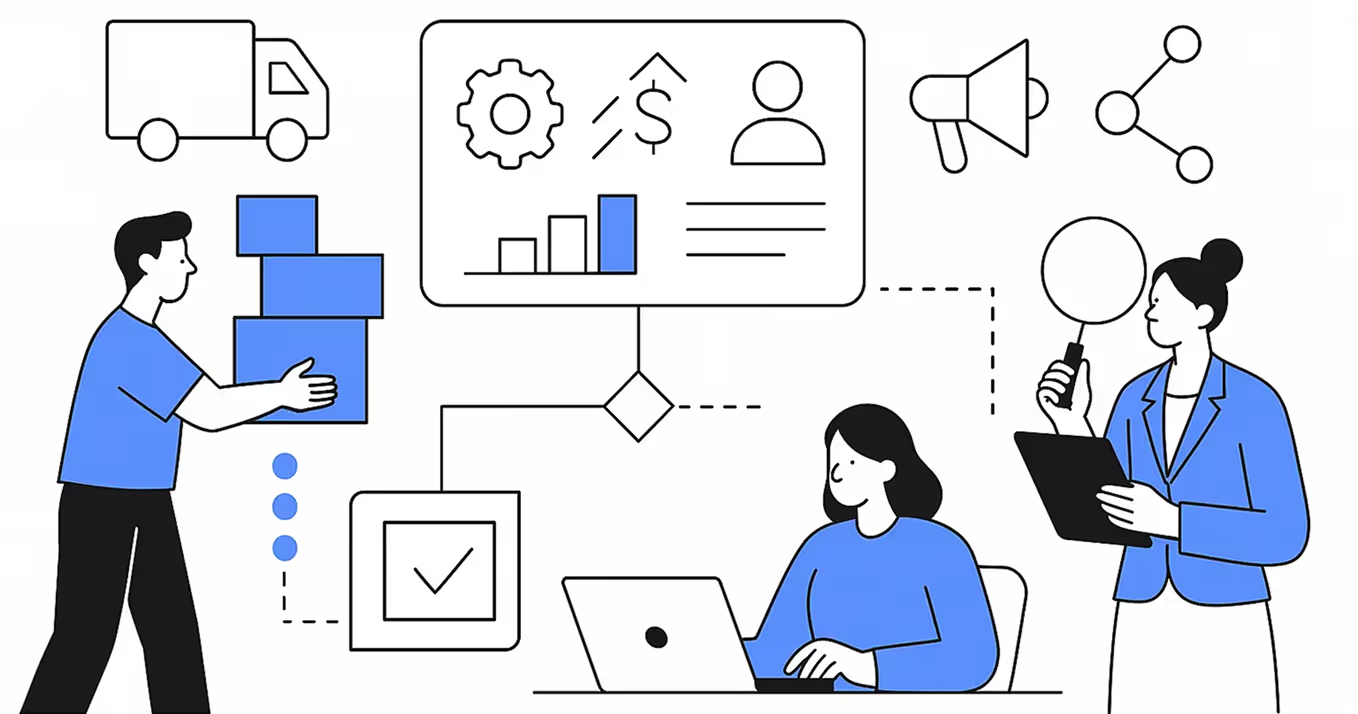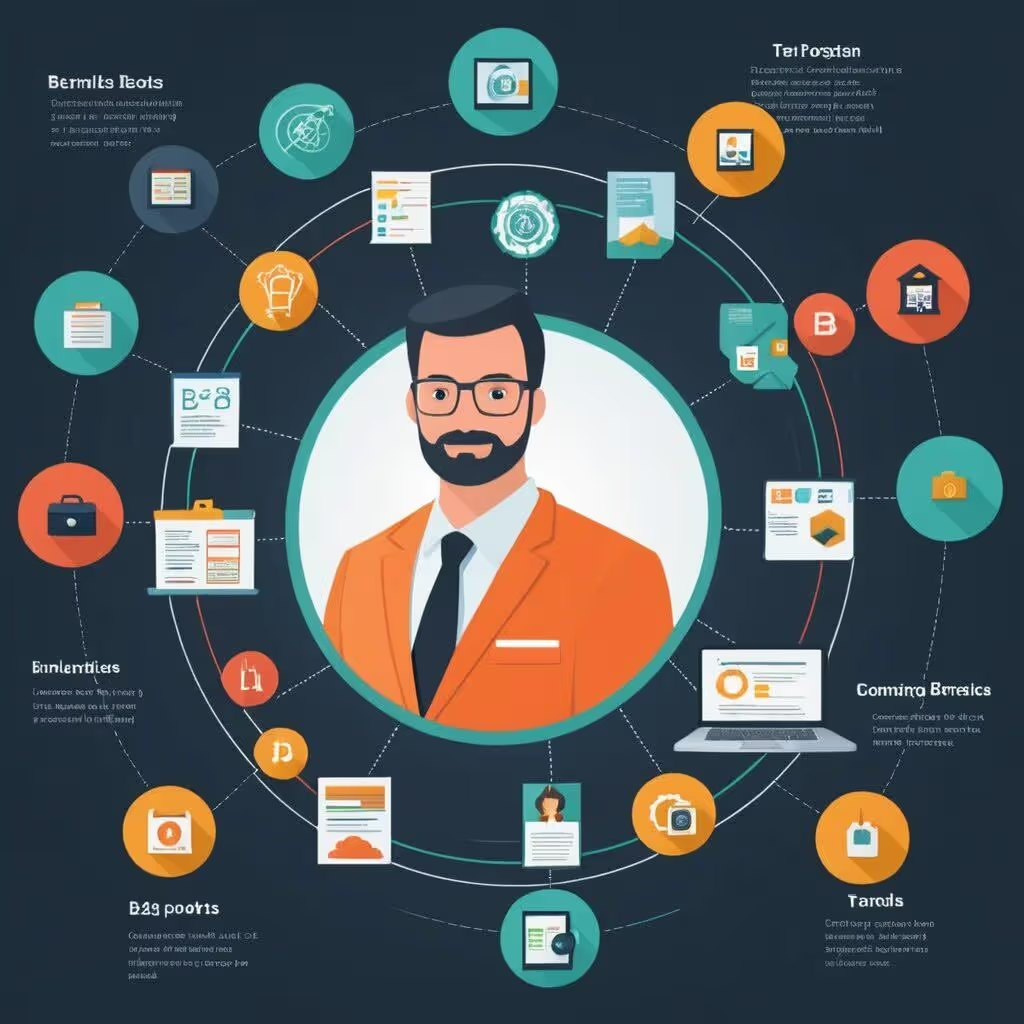Management practitioners often compare a company to a living organism. If we develop this analogy, the IT infrastructure occupies the niche of the nervous system in the company's “body”. It receives information from outside or from within, transmits it, stores it, reproduces it, etc. — our neurons and brain do about the same thing.
But there is a caveat. If we talk about a company in the context of the life cycle of a single living object (birth, survival, growth, death), then the development of the IT ecosystem is more like an evolutionary path. It grows and becomes more complex, takes on more and more functions and processes, and is transforming.
The first “star”
Let's take a simple and clear example — an online store. At the start, its IT infrastructure is simple; it includes two or three elements with appropriate integrations between them. CRM for working with customers and orders, an online store on Bitrix and integration with the OZON marketplace.
As the company grows, the number of elements in the ecosystem increases. A WMS program is added for working with inventory balances, then ERP for planning business processes in production, PIM for managing product information... The number of integrations is growing exponentially.

This type of integration is called a “star” (for its multi-path structure) or “spaghetti” (for confusion), and they are appropriate if the company does not have plans for large-scale development and IT transformation. However, it is worth remembering that the “star” has a number of features that can be critical for the growth of information infrastructure.
- Upgrading any of the elements inevitably entails a large-scale redesign of integrations. For example, a Bitrix update is coming out, and all integrations “tied” to it have to be redesigned.
- Event logging in each integration is implemented differently (if at all). If data is lost or accessed incorrectly, it is extremely difficult to track when and why the error occurred.
- Each new element of the system requires significant investments in point-to-point integration. You decide to sell goods through another marketplace, and you have to integrate it with an online store, CRM, WMS, ERP, PIM, etc.
- Business intelligence suffers: data is “scattered” from different sources, stored in different formats, and duplicated. It is very difficult to combine them into a convenient tool for making management decisions.
- The larger the infrastructure becomes, the more time and money it takes to maintain, and the fewer resources are left to improve its performance.
The path of IT evolution
Evolution tells us which path to choose in order to remain competitive: to form the central nervous system.
ESB service software (short for enterprise service bus, Russian) takes on the role of such a “central nervous system” in IT infrastructure. “enterprise service tire”). After ESB is integrated, the IT infrastructure scheme becomes much clearer and more rational.

The ESB bus combines a number of functions that are distributed across integrations in the “star” or are not implemented at all.
- ESB collects information from other systems: both related to the company's IT infrastructure and external ones. Information comes in the form and formats in which it is contained in the source system.
- Within ESB, data is converted into the right formats for transfer to other systems.
- The operator sets the logic for routes and conversions: where should certain data come from, how it should be transformed, and where it should be sent.
- The logs are stored in the message broker. In the event of errors or losses, it is easy to determine at what point something went wrong without waiting for the mistake to happen again. Accordingly, it is much easier and faster to fix errors and recover data.
Evolutionary advantage
The technological economy dictates its own rules. The company's success is closely linked to its ability to respond quickly, transform and scale. In this sense, horizontal integration with ESB is certainly becoming an evolutionary advantage for the company.
Do you need to connect to a new marketplace? To do this, you don't have to write dozens and hundreds of point-to-point integrations; it's enough to register integrations between ESB and the marketplace and set up data routes within the enterprise service bus. Even a person who is not immersed in development can handle the latter: the ESB interface is clear and easy to use, and the entire setup will take only a few hours.
Has a CRM system update been released? Again, you don't have to rewrite all integrations.
So if you have:
- there are three or more services in the IT infrastructure,
- there are strategic plans for the development and scaling of the business,
- several communication protocols are used,
- there is a need to track the path of information,
ESB bus integration is the most logical solution that will allow you to reduce development and support costs in the future and, as a result, work more efficiently.
Horizontal integration using a service tire also has its drawbacks. ESB is a separate system that will require additional resources: dedicated servers, initial integration costs. But in the long run, if the company plans to scale and evolve, the initial investment will pay off.








